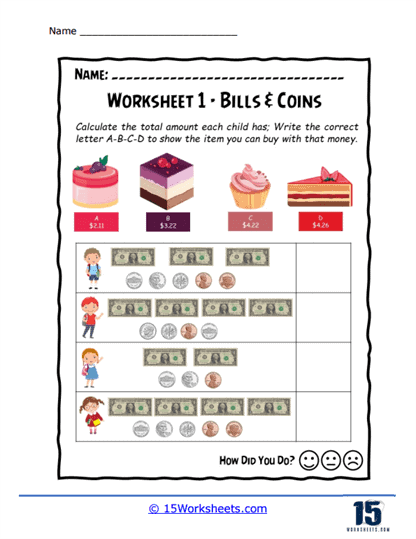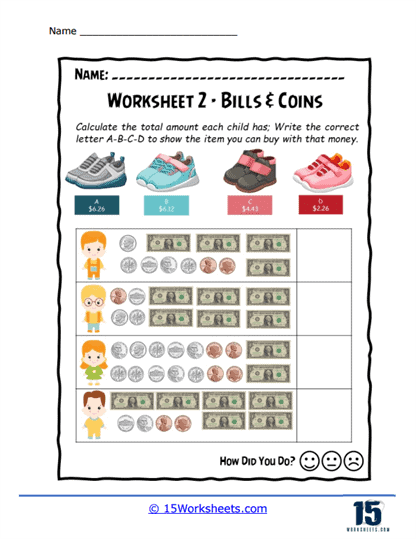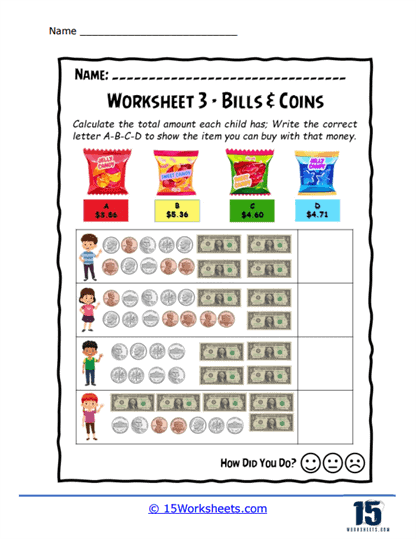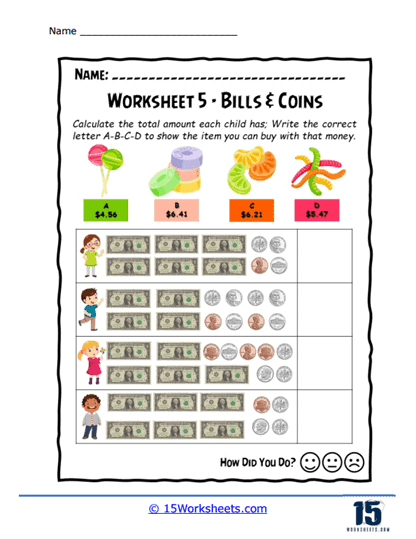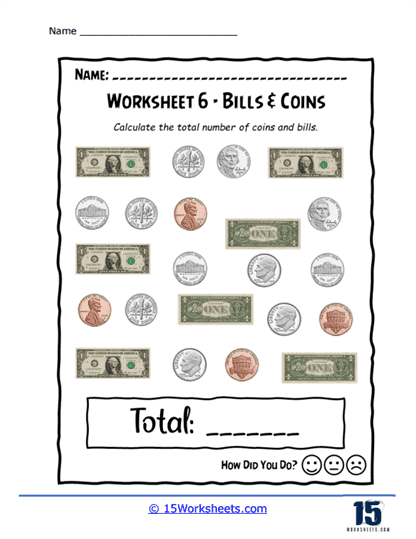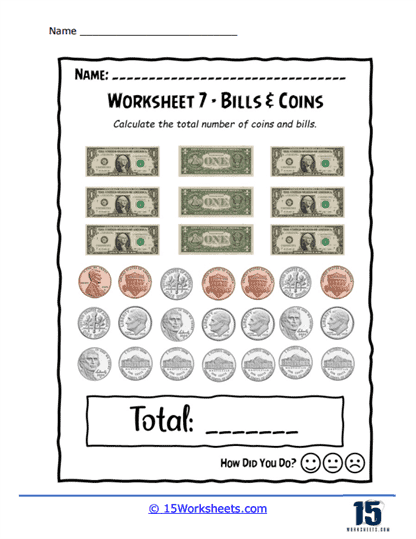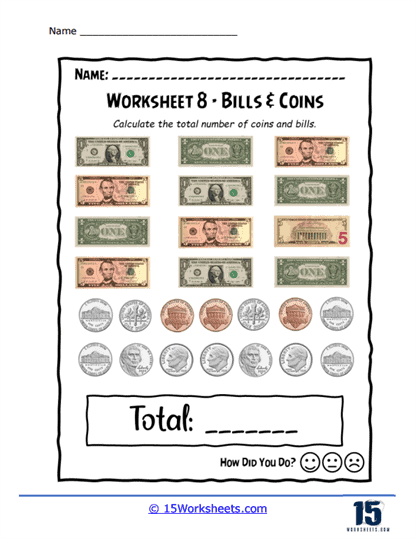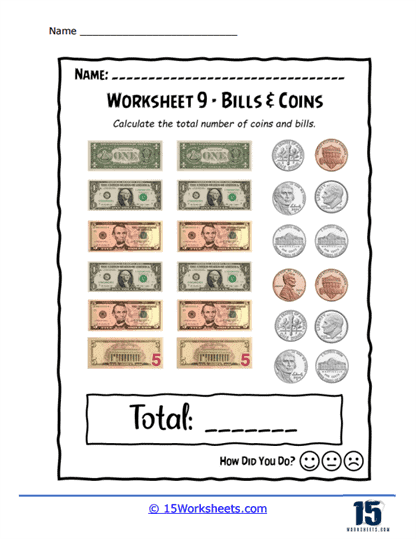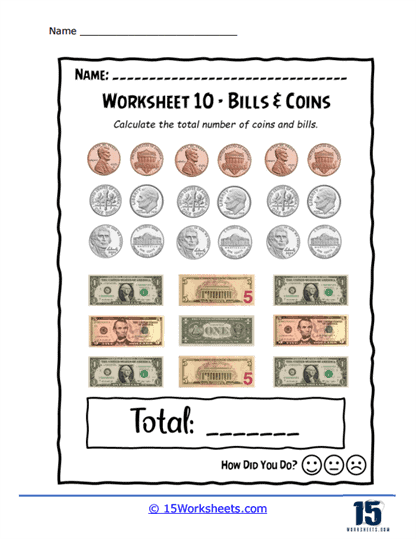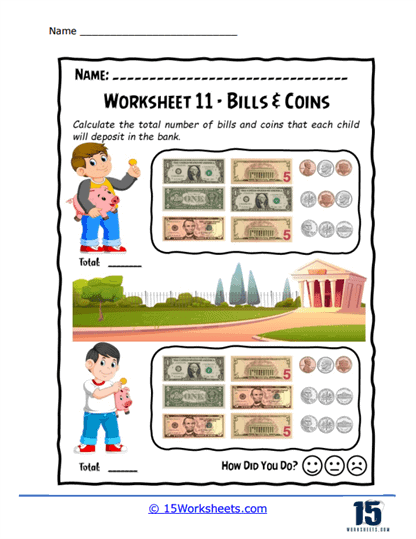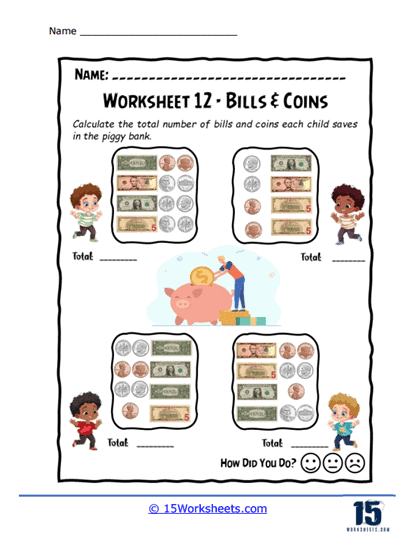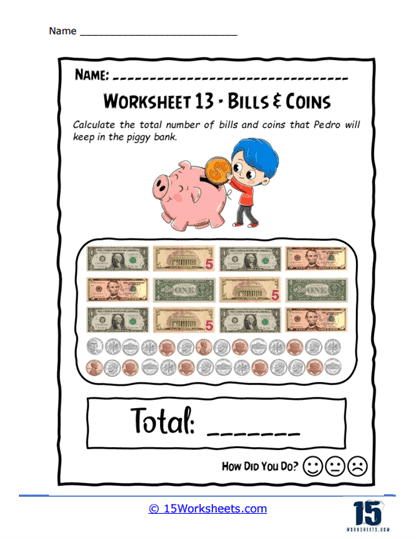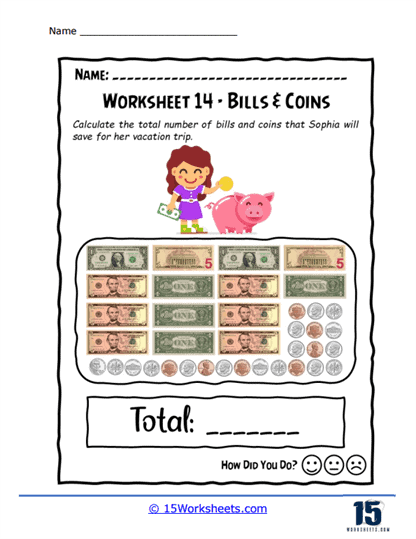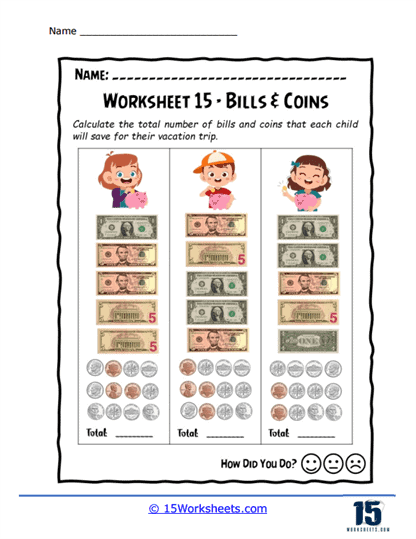Counting Bills and Coins Worksheets
About These 15 Worksheets
Counting Bills and Coins Worksheets are aimed at teaching students the fundamental aspects of handling and calculating monetary values. These worksheets typically feature realistic images of currency – including both bills and coins – and are used to help students develop a practical understanding of money through the application of basic arithmetic, such as addition and subtraction. Often used in elementary and middle school classrooms, these worksheets are a staple for beginning financial education.
They provide a hands-on approach to learning that is both engaging and informative, equipping students with the skills necessary to navigate the financial aspects of daily life with competence and confidence. These worksheets serve not just as an educational exercise but as a fundamental building block for life skills in money management.
The exercises found on Counting Bills and Coins Worksheets vary in complexity and style, catering to different learning stages and objectives. Here are some of the most common types:
Identification Exercises – These are the most basic form of counting money worksheets. They usually involve pictures of different coins and bills, and students are asked to write down the value of each. This helps students familiarize themselves with the physical appearance and value of each piece of currency. Once students can identify the value of coins and bills, the next step is adding them together. Simple addition exercises present students with groups of coins and bills and ask them to calculate the total sum. This type of exercise enhances their counting and addition skills.
Mixed Coins Addition – These worksheets present a more challenging task by mixing different coins together. Students must identify each coin, determine its value, and add up the total. It’s a practical way to teach students how various coin combinations add up to the same amount of money.
Bill and Coin Addition – To further complexity, some worksheets include both coins and bills in the exercises. Students need to count each separately and then combine the totals to understand how coins and bills work together to form larger amounts of money.
Making Change – These worksheets give students a scenario where a certain amount is paid for an item, and they must calculate the correct change. This is a practical exercise that simulates a real-life shopping experience. Some worksheets incorporate word problems that require reading comprehension as well as math skills. Students must extract the necessary information from the text and use it to calculate totals or change.
Counting Sequences – These exercises help students practice counting by ones, fives, tens, or other increments using coins and bills. For example, students might be asked to count by tens using dimes or by fives using nickels. To make learning interactive, worksheets can include matching games where students match coins to their values or to items with corresponding prices.
Greater Than/Less Than – Worksheets may also include exercises that teach students to compare different sets of coins and bills to determine which set has a greater or lesser value. Some worksheets focus on rounding money to the nearest dollar or cent, teaching students a useful skill for estimating costs and making quick calculations.
The Benefits of These Worksheets
Practicing with Counting Bills and Coins Worksheets helps students improve their understanding of basic currency and real-world math skills in several ways:
Familiarity with Currency – Students become familiar with the physical form of money, learning the names, values, and visual characteristics of each coin and bill. This is essential for real-life transactions where they must recognize and handle money. Counting money requires addition and sometimes subtraction. These worksheets provide repetitive practice that solidifies these basic arithmetic skills, which are foundational for all higher-level math.
Attention to Detail – Handling money requires careful attention to ensure accuracy. These worksheets promote meticulousness as students must be precise in identifying and adding different values, which is a critical skill when dealing with real currency. Word problems involving money enhance critical thinking as students must decide which mathematical operations to use and how to apply them to reach the correct conclusion.
Financial Literacy – Early exposure to money handling can lead to better financial understanding and habits. Students learn to manage and calculate money, preparing them for future responsibilities like budgeting and saving. By using realistic images and scenarios, counting money worksheets show students the practical application of math. They learn that math is not just theoretical but is a necessary skill for everyday activities such as shopping and budgeting.
Confidence with Transactions – As students become adept at counting and making change, they gain confidence in their ability to handle transactions efficiently, reducing anxiety about money-related tasks.
Preparation for the Future – Understanding money is crucial for all future endeavors, whether personal, academic, or professional. These worksheets lay a solid foundation for any situation where money management is involved. Counting money involves complex cognitive processes like sorting, grouping, and comparing, which are vital for the development of higher-order thinking skills.

